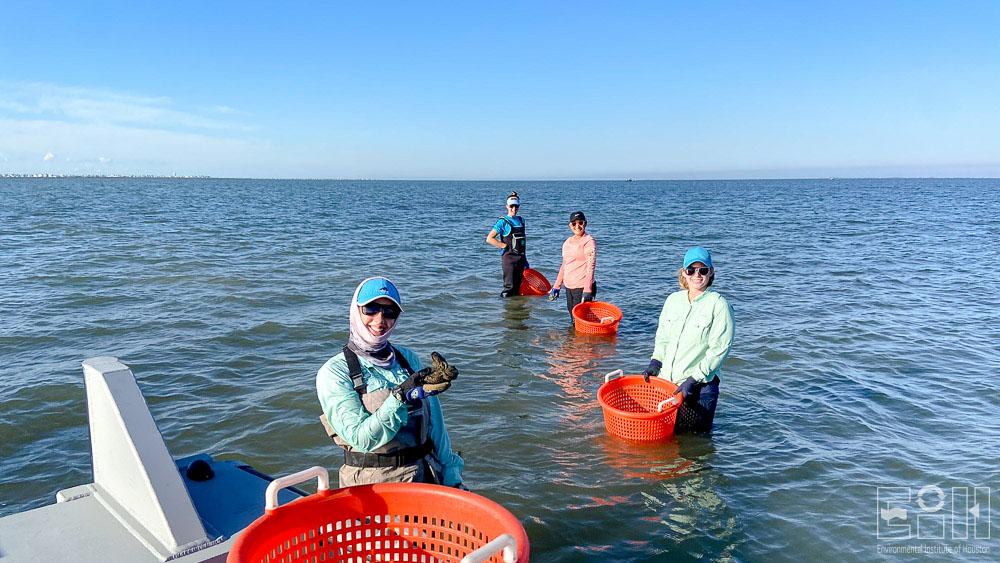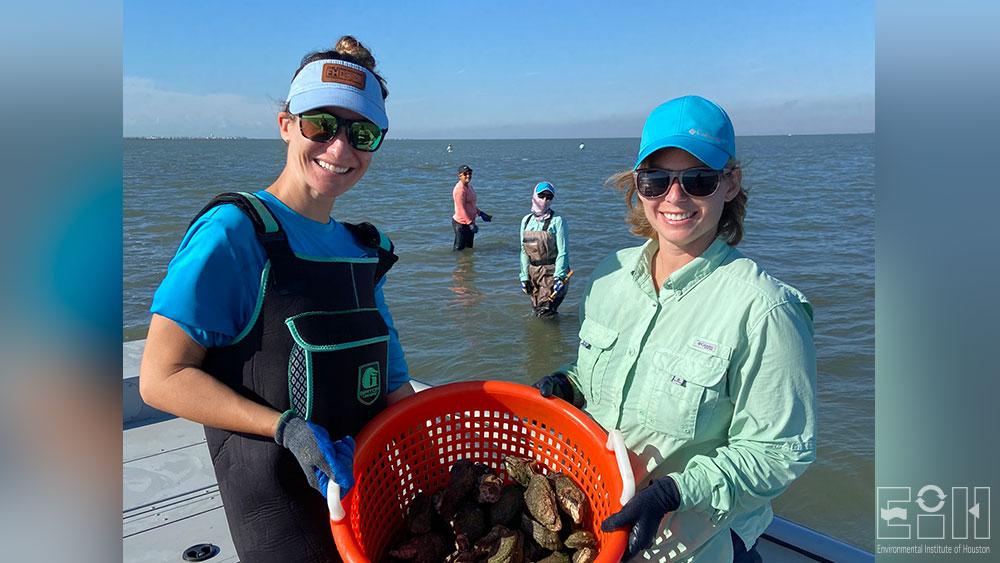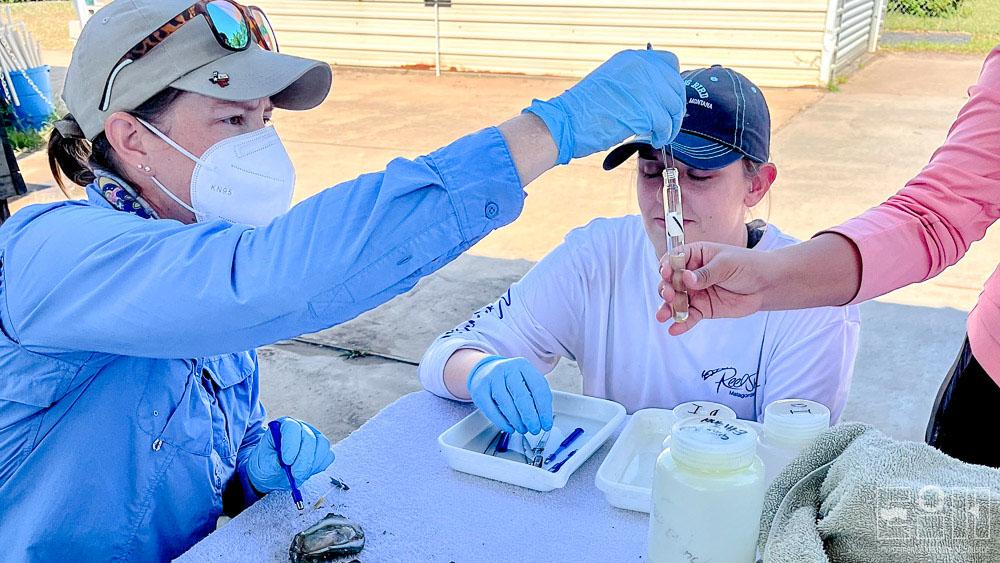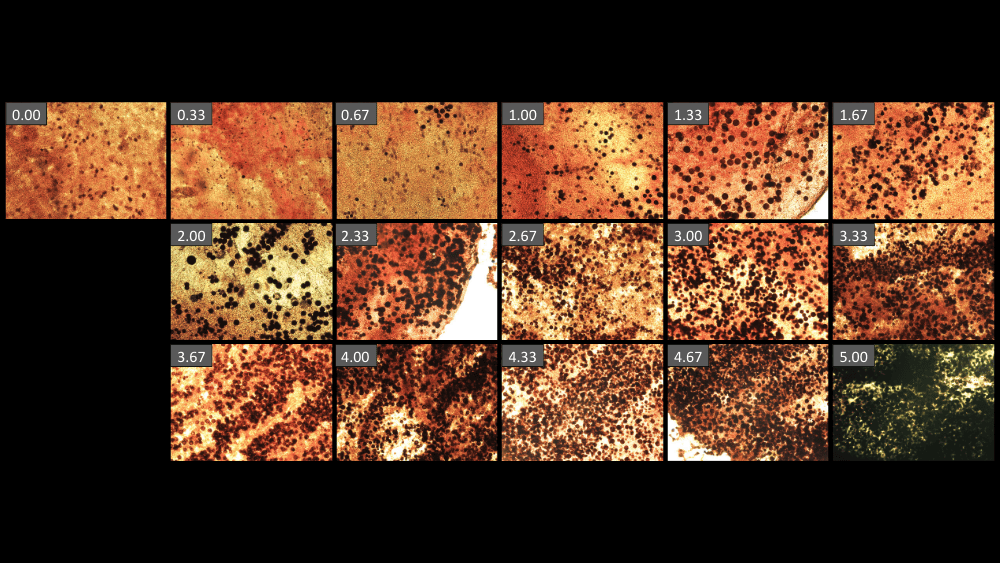
Establishment of an Oyster Sentinel Program for Tracking Perkinsus marinus (Dermo) in Oysters of Galveston Bay
Purpose/Objective
Through funding from the Galveston Bay and Estuary Program, the Environmental Institute of Houston (EIH) has partnered with members of the Texas Parks and Wildlife Department’s (TPWD) Coastal Fisheries Lab in Dickinson, Texas, and geneticists from TPWD’s Perry R. Bass Marine Fisheries Research Center to refine protocols for routine monitoring of Perkinsus marinus (e.g., dermo) infection rates in oysters from Galveston Bay with the ultimate goal of establishing a long-term Oyster Sentinel Program.
The primary objectives for this study are to:
- Establish a monitoring network for evaluating dermo levels in Galveston Bay oysters.
- Compare and contrast differences in dermo presence, prevalence, and severity by spatial, temporal, and environmental factors using two standardized methods.
- Submit pertinent data to the Oyster Sentinel online network.
- Characterize potential relationships of dermo with environmental variables.
- Make recommendations for long-term adoption and support of the Oyster Sentinel online network.
Study Area
Galveston Bay Area
Project Period
2024–2026
Description
The majority of bay bottom in Texas estuaries consists of flat soft sediment, with the exception of oyster reefs. The eastern oyster is an ecosystem engineer and keystone species providing limited hard-bottom habitat and numerous ecosystem services. It is estimated that oyster reefs have 50 times the surface area of an equally sized flat bottom. Oysters are considered a reliable bioindicator of estuarine ecosystem health which integrates the effects of freshwater inflow, pollutants, climate variability, and habitat destruction and extreme weather impacts. Oysters suffer from numerous biological and anthropogenic sources of stress and mortality. Dermo is widely distributed throughout the oyster producing waters of the Gulf, and the prevalence of the parasite is high among oyster populations. Intensive dermo infections have been associated with massive mortalities, especially during the summer, when high water temperatures and salinities exacerbate disease conditions. Consequently, it is important to understand the influence of various stressors on this critical resource.
Project Sponsors and Partners
- Texas Commission on Environmental Quality
- Galveston Bay Estuary Program
- Texas Parks and Wildlife Department










